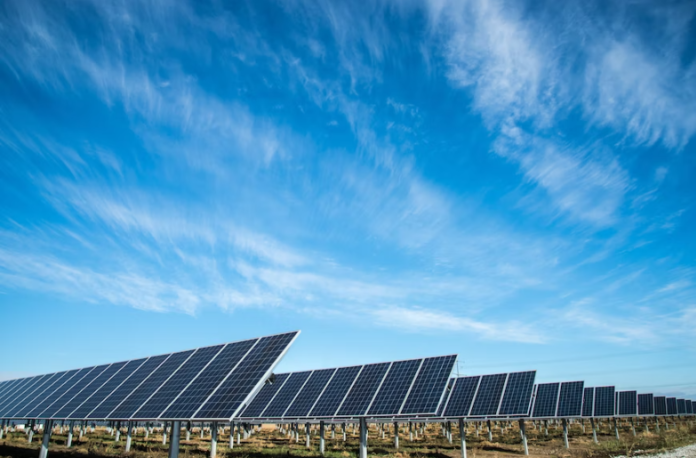Community solar programs allow people to subscribe to portions of a more extensive solar array hosted off-site. This gives renewable energy access to millions who lack roof space, are renters, or can’t afford steep project enrollment fees.
Historically, clean energy projects have gone to businesses and higher-earning households that can pay the steep costs of onsite solar. But that’s changing.
It’s More Affordable
A community solar program is a group of energy customers who purchase or lease shares in a larger local renewable energy facility (typically between 500 kilowatts and 5 megawatts). They then receive credits on their utility bills that help them save money and reduce their electricity use. This model is becoming especially popular in rural and urban areas where many people want to go solar. Still, they can’t due to rooftop installations’ cost or space limitations.
Community solar is a powerful way to bring renewable energy to low-income communities. Many companies have been working to expand the reach of community solar. That’s because they lack suitable roofs, live in multifamily housing, or cannot afford the upfront costs of a rooftop installation.
Community solar is an excellent solution for these households. It offers lower upfront costs and can also be more flexible with terms, such as allowing participants to transfer their participation in the project to a new address if they move within the service area. Additionally, many community solar projects allow subscribers to monetize the federal investment tax credit through discounted subscription rates. This makes the system more affordable for everyone, but it is essential for people who need help to take advantage of rooftop solar due to financial constraints.
It’s More Inclusive
The beauty of community shared solar is that it enables all residents to access the benefits of solar without having to install their systems on their rooftops. This includes renters, owners, local businesses, nonprofits, and municipal buildings. This allows communities to get clean, renewable energy, save money and strengthen the grid — a triple win.
But so far, only half of all community solar projects have low-income participants. That’s because the program models and policies that have sprung up around this growing trend tend to focus on businesses, universities, and government agencies that can afford to pay steep project enrollment fees or meet financial requirements, leaving low-income households out.
That’s changing. States and cities are introducing policy incentives to make it easier for lower-income households to sign up for community solar. For example, they recently announced plans to bring community solar to 100,000 low-income residents by 2032. And some State has convened a work group to study how expanding community solar might look.
The other significant change is that smaller, community-based developers are getting into the game. And unlike investor-owned utilities, which account for the majority of existing community solar capacity, these programs tend to be run by independent third parties, such as co-ops. As a result, these third-party providers can offer much more flexible program terms, such as locked contracts and zero upfront costs.
It’s Better for the Environment
Many communities have found that more than just homeowners can benefit from solar power. For residents with rental properties, roofs that can’t host panels or financial barriers, community solar is an affordable and reliable way to save money on electricity bills while reducing the environmental impact of their energy use.
The community solar industry has developed in response to this challenge and is now a mature market. With the adoption by states and utilities, it’s becoming a proven model that can deliver renewable energy and bill savings to low-income households.
There are two main types of community solar: purchase models and subscription models. In the purchase model, you buy a portion of a community solar project that produces clean energy for your home or business. You then receive credits on your utility bill based on the amount of solar power you consume.
In the subscription model, you don’t own any physical panels or a share of a community solar project. Instead, you pay a subscription fee and get a percentage of the energy that the project produces on your behalf each month. These solar community types are modeled after the traditional rooftop net metering model. You will see a credit on your utility bill based on your shared participation in a project connected to your distribution network.
It’s Better for the Economy
Community Solar allows customers to subscribe to a local, community-operated solar farm connected directly to the grid, generating eco-friendly energy for the overall grid. This provides the same energy savings as a rooftop solar system without hefty upfront investments, installation, maintenance, and upkeep costs.
By supporting more local community solar, it also helps to create jobs and stimulates the economy. Local solar farms develop various job opportunities from construction to operations, which are then funneled back into the local economy. In fact, according to a recent study eliminating barriers to community solar could lead to over 12,000 new jobs and cultivate economic activity.
In addition, community solar can bolster rural economies by monetizing unused land for solar development. This provides a significant revenue stream for farmers, especially those in communities struggling during the recession. As more states adopt pro-community solar policies, the potential for broader economic growth grows.
In addition to its direct energy benefits, community solar is becoming more inclusive and equitable. Historically, dirty fossil fuel plants have been built in low-income communities, which often suffer from higher health and environmental impacts due to their proximity to coal plants. Through community solar programs, low-income and people of color can reap the rewards of clean energy – whether through lower bills or more renewable energy on their utility bills.










